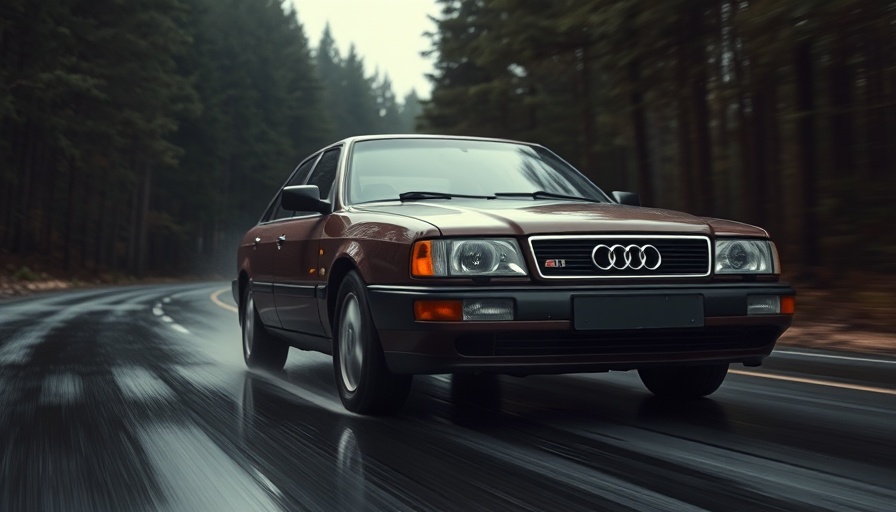
The Evolution of the 1999 Porsche 911 Carrera 4
Porsche has long been synonymous with performance and luxury, but by 1999, the brand took a bold step forward with the introduction of the 911 Carrera 4. This model was not merely an incremental update; it represented a significant evolution in the 911 line. Incorporating a cutting-edge four-wheel-drive system and a revolutionary stability-control mechanism, Porsche aimed to ensure that even novice drivers could experience the thrill of this iconic sports car without compromising control.
A Closer Look at Four-Wheel Drive Benefits
While the Carrera 4 was noted as the slowest-accelerating 911, its four-wheel-drive system provided something undeniably valuable: stability. Amidst high speeds and challenging curves, drivers could push the car to its limits with confidence and control. This reassurance is particularly crucial for an audience drawn to the thrilling world of performance driving. The Carrera 4 catered to those who yearned for safety without sacrificing the excitement of the road.
Innovations in Stability Control Technology
One of the standout features of the 1999 911 Carrera 4 was the introduction of Porsche Stability Management (PSM). Far more than a simple traction control system, PSM utilized a sophisticated array of sensors to predict and respond to potential loss of control. This meant that the car would automatically adjust via braking or engine power alterations, providing drivers with a sense of security that was previously unparalleled. It transformed the driving experience—allowing for faster lap times on racetracks like Road Atlanta, and instilling confidence in everyday driving scenarios.
Lighter without Compromise: The Use of Modern Engineering
Porsche engineers achieved a remarkable feat in reducing the weight penalty typically imposed by four-wheel-drive systems. By integrating the viscous coupling within the front differential and improving body stiffness, they successfully reduced the weight of the system by 12 pounds. Enhanced weight distribution (40/60 front-to-rear) helped maintain the dynamic feel that avid Porsche drivers expect, showcasing how technological advancements harmoniously blend with design philosophy.
Connecting with Enthusiasts: The Carrera 4 Community
For the dedicated Porsche community, the Carrera 4 is more than just a vehicle; it symbolizes a commitment to performance combined with reliability. Owners find immense value in the stability and reassurance provided by the four-wheel-drive system and PSM—elements that allow them to drive their cars hard without the fear of oversteering or losing grip. This connection to safety is part of the allure that draws enthusiasts to Porsche, compelling them to invest in a vehicle that embodies their passion.
Future Trends in High-Performance Vehicles
Looking toward the future, the lessons learned from models like the 1999 Carrera 4 continue to inform Porsche's approach to performance engineering. The blend of strength, innovation, and safety has become a blueprint for subsequent generations of sports cars. With each new model, Porsche recommits to providing drivers with an experience that balances raw performance and user-friendly technology—trends that are likely to define the landscape of high-performance vehicles in the years to come.
As dealerships promote newer models, understanding the heritage and innovative spirit behind icons like the Carrera 4 can drive a deeper connection with potential buyers. It’s not just about selling cars; it’s about passing on a legacy of engineering excellence and passionate driving.
 Add Row
Add Row  Add
Add 

 Add Row
Add Row  Add Element
Add Element 




Write A Comment